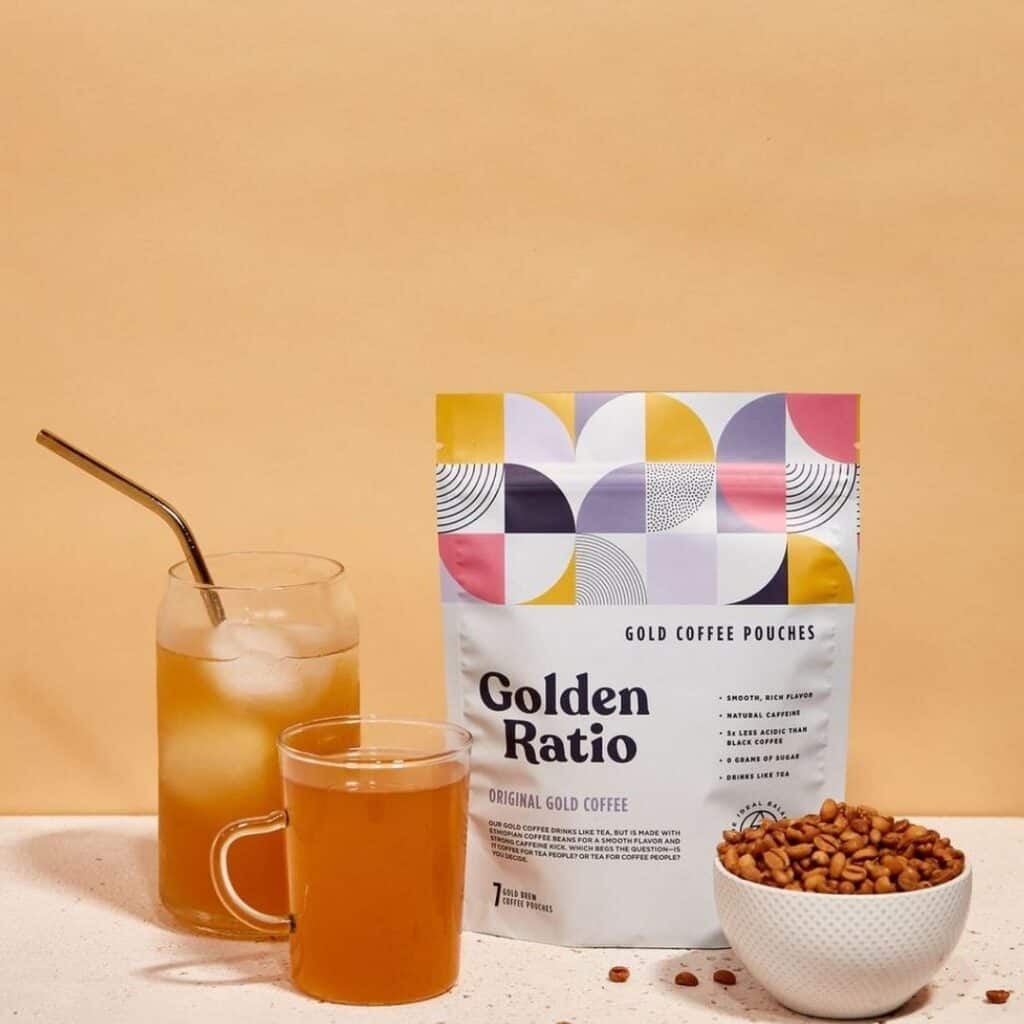What’s the deal with coffee and IBS, anyway? Have you heard mixed reviews about whether coffee may help or hurt your IBS? Our bodies can be a complicated place to live, so here’s the scoop on what we know about coffee and poop!


Why does coffee make you poop?
There are a few ideas floating around about why coffee makes us poop. The main theories are 1) that caffeine may stimulate muscle contractions in the gut, 2) the acid in coffee may irritate the digestive tract causing excess stomach acid and muscle contractions or spasms, and 3) that drinking something warm (especially with a meal) can trigger the gastrocolic reflex.
How your body responds to each of these pieces will depend on a few things including which subcategory of IBS you fall under, how your body processes food in general, and how your brain and your gut communicate with one another (called the brain-gut-axis). So let’s break things down.
Does caffeine really make you poop?
While it makes sense that as a “stimulant” caffeine might stimulate your gut muscles, Monash University has reviewed current research and determined that most of the information linking caffeine and bowel movements is anecdotal.
If you do a quick Google search, there are several articles linking caffeine and increased bowel movements. But with a little investigative work, there are a few problems with the research currently available.
First of all, the research cited in many of these articles focused on small groups of people (often around 10 – 50 people) most of whom were men.
This is problematic for two reasons. First, there is a specific calculation used to determine how many people are needed in a study to draw meaningful conclusions from the data collected.
This calculation is normally listed in the body of the research article. I didn’t see any of the calculations listed in the research cited, which means these were likely “samples of convenience.” – Meaning these were the people available to do the study, not necessarily the number of people needed.
Second, IBS impacts more women than men (65% of people with IBS are female). That means even if the pool of participants is large enough to draw meaningful conclusions because a disproportionate number of the participants were male, we might be missing information on how caffeine impacts the bodies of a significant part of the IBS community.
Another issue is that many of the studies used coffee to study the impact of caffeine on the GI tract. While a standard cup of coffee does normally contain around 96 g of caffeine per serving, it also contains several acids and oils which may also impact the gut. So there’s no way to know if study participants were reacting to the caffeine itself or to another component of their morning brew.
Finally, none of the studies cited used a control group, which means there’s no way to account for other environmental elements like combining coffee with other foods, the time of day the coffee was consumed, or pairing coffee with other GI stimulants like exercise.
Based on what I’ve found so far, I agree with Monash that for now, the link between caffeine and IBS is mostly anecdotal. But that doesn’t mean drinking coffee isn’t linked to changes in your poop!
How does the acidity in coffee impact poop?
Heads up, there are two ways we talk about the acidity of coffee – acidity and acids (wait, what?!).
When we talk about the “acidity” of coffee, we’re talking about where it falls on the pH scale. The pH scale ranges from 1 – 14. On the scale, foods and substances falling between 1 – 6.9 are considered acidic, 7 is “neutral,” and 7.1 – 14 are basic (no, not that kind of basic!).
Since standard coffee falls between 4.9 – 5.1 on the pH scale, it’s considered an acid.
If coffee makes you feel like your insides are melting, you might be nodding your head right now thinking, “yep, sounds right to me!” But there are tons of other foods that are just as acidic and don’t normally turn our guts inside out. For example:
- Bananas pH 5
- Orange slices pH 4
- Grapes pH 3.5
- Raspberries pH 3.2
So, if coffee being a literal acid isn’t the issue, what gives? Well, coffee also contains a number of acid compounds. Nine to be exact!
In order of appearance, they include chlorogenic, quinic, citric, acetic, lactic, malic, phosphoric, linoleic, and palmitic. Say those 10x fast!
The one we’re interested in today is chlorogenic acid! Whether it’s your friend or foe will depend on your unique body.
Using coffee for constipation
If you suffer from constipation-predominant IBS (IBS-C), your healthcare team may recommend adding coffee to your daily routine. This is because coffee is jam-packed with chlorogenic acid.
Chlorogenic acid is known for a few things that impact the gut. First, it stimulates the hormone gastrin in the stomach lining. This triggers additional gastric acid to be secreted in the stomach.
This extra acidity can cause irritation of the gut lining and stimulate muscle contractions along the GI tract. This can be especially helpful for people with IBS-C since these contractions may speed up their gut motility (how quickly food travels from one end of your body to the other).
This impact can be especially powerful when combined with diet changes and tools to improve the body’s mechanical digestive process – like pairing coffee with a breakfast designed to stimulate the gastrocolic reflex.
Chlorogenic acid can also stimulate the gallbladder and pancreas to secrete the hormone cholecystokinin (CCK). This hormone encourages the release of enzymes and bile into the small intestine to help us digest fats, proteins, and carbohydrates (thanks friend!).
While research on chlorogenic acid and the gut is still new, researchers are also looking into the health benefits of chlorogenic acid on our microbiome.
Early studies (on tiny groups of people, and sometimes on mice ← rude!) have shown that a small portion of chlorogenic acid is absorbed right from our tummies, while another small portion is broken down into two compounds called caffeic acid and quinic acid.
Caffeic acid is absorbed almost right away, while the quinic acid and the remaining chlorogenic acid travel to the large intestine. While research in this area is still very new, researchers have noted that chlorogenic acid (in its whole form) may act as a source of food for some of our gut bugs (these are called “prebiotics”).
One of the bugs who particularly enjoy chlorogenic acid in their lunchbox is Bifidobacteria. These particular buggies have been linked in several studies to an increase in productive bowel movements, reduction in the duration of antibiotic-induced diarrhea, and are currently being studied for their role in supporting people with persistent constipation.
The impact of coffee on diarrhea
On the flip side, what jumpstarts digestion for some people may trigger episodes of cramping, diarrhea, and urgency for others. In other words, for some, a cup of coffee stimulates a laxative effect. Oh, the effects of coffee!
This laxative effect can be particularly true for people with diarrhea-predominant IBS (IBS-D) or mixed symptoms (IBS-M/A) who may find chlorogenic acid a little too grating on their guts!
Circling back to caffeine (told you this was complicated), coffee can also overstimulate the nervous system. For people who suffer from issues like visceral hypersensitivity, adding caffeine into the mix may crank up the volume between the gut and the brain, trigger episodes of anxiety or heightened nervous system response (think fight or flight), and interfere with sleep – all of which can heighten pain signals traveling from your gut to your brain.
Heads up, not everyone experiencing diarrhea is sensitive to caffeine or coffee-specific acids. So if coffee is something you want in your life, don’t cut it out because you saw it on a “do not eat” list.
Your body is the perfect laboratory! So if coffee is something that you can’t live without, buckle up your suspenders and test out if a) coffee impacts your body at all, b) if you do better with decaffeinated coffee, or c) if a low-acid coffee works better for you!
Is low-acid coffee better for IBS?
I hope you know by now that we’re not into “good” and “bad” labels here. But even die-hard coffee lovers know that there is a fine line between that beautiful buzz and a caffeinated catastrophe!
If coffee is your jam, but you’re getting the gut-melting, sour feeling that makes you reconsider your life choices as you pop that empty cup of coffee in your sink, you might find a low acid coffee helpful!
There are a few ways coffee brands produce low-acid coffee (no, magic isn’t one of them). The first is location, location, location!
Impact of elevation on acidity
One indicator of a coffee bean’s natural acidity levels is the elevation it’s grown at. Plants grown closer to sea level tend to be lower in naturally occurring acids, but can also be a little lighter in flavour.
Plants grown at a higher elevation are raised in cooler temperatures. This means the fruit (called a cherry) has more time to develop. This adds a more complex and lively flavour to your brew. But the same acidity that creates that sparkle in your morning cup of coffee can also leave your tummy feeling a little sour!
Steamed beans
Some companies lower the acid level of regular coffee beans by steaming or washing away the natural waxy coating off of the beans before roasting them.
Since many of the organic acids in coffee are water-soluble, this steaming/washing process allows some of the acidity to leech out of the green coffee beans before roasting.
Roasting length and temperature
Another way companies create low acid coffee is by adjusting the actual roasting process. Chlorogenic acid breaks down at high temperatures, so darker roasts are often lower in this gut-munching chemical than lighter brews.
While darker roasts are technically “lower in acid,” many people in the IBS community have reported darker beans still don’t work for their bodies (and may make them feel worse).
Part of the problem is that when chlorogenic acid breaks down it makes a byproduct called quinic acid. This acid gives darker roasts that sharp flavour, which our brains often interpret as higher acidity. But, technically speaking, dark roasts actually have fewer acid compounds.
I know what you’re thinking! Amy, that makes sense to my brain, but my tummy is saying no freaking way! That stuff is poison, acid or not!
I would have to agree with you there, friend! Dark roast is no friend of mine! But what if acids aren’t the only compound in coffee that can churn your gut?
Plot twist! What if the problem with dark roasted beans is oil?
Because traditionally roasted beans lose so much moisture during the roasting process, dark roasted beans in particular start to decompose almost as soon as they leave the coffee bean oven.
Because these rosts are so low in moisture, you’re not going to see mould growing on them as they decompose. But as they begin to chemically unravel, they do release oily compounds that may smell bitter and leave an oily film on your coffee.
While the theory of oil-induced tummy sludge is still just food for thought, I’m definitely curious to see how research in this area develops!

We covered a ton of ground today, friend! So to set the record straight, we talked about how caffeine has been debunked as a gut irritant, how the acids and oils in coffee may be your ultimate frenemy, and how low-acid coffee may get coffee back on the menu!
But if you’re a die-hard caffeind who feels like they’ve tried everything and can’t catch a break, I’d like to introduce you to my new friends at Golden Ratio!
The Golden Ratio team uses a low and slow roasting method to roast their beans so they’re less irritating to the gut AND they aren’t covered in gut-munching oils! In fact, their coffee is 5x less acidic than standard coffee and lower in acid than “low-acid” coffees you can find at your local store.
Plus, because they care about your gut, they’re currently in the process of being certified by Monash University, so you can sip your poop juice in peace!
PS! Because I love you, I convinced them to give me a 20% discount for my peeps (that’s you!). So if you’re looking for a little something to curb that caffeine craving, or you just want to try something new, this gold brew may just be your new favourite thing!
If you try it, don’t forget to come back and tell me how you (and your gut) liked it!
If you like this post don’t forget to share it! Follow me on YouTube @flipyourleaf for a ton of videos on understanding FODMAPs, IBS mechanics, and how to feel safe in your body. Together we’ll get the low FODMAP diet down to a science!
You might also like one of these:
- 5 Low FODMAP Restaurant Tips Trying to eat out while on the low FODMAP diet can be a panic-inducing experience. But you can absolutely enjoy eating out during the elimination phase with these 5 low FODMAP restaurant tips!
- Does Heat Trigger IBS Symptoms? Wondering why your guts get mucked up in the heat? Here are some thoughts on why your IBS is not a fan of summer.
- IBS and Exercise Think having IBS means you can’t exercise? Think again, friend! Here’s what you need to know about incorporating physical activities into your life.
References
How much caffeine is in your cup? (2020, February 29). Retrieved from https://www.mayoclinic.org/healthy-lifestyle/nutrition-and-healthy-eating/in-depth/caffeine/art-20049372
La Vecchia, C., Dr. (2020, May). Expert repot – Coffee and its effects on digestion. Retrieved from https://www.coffeeandhealth.org/wp-content/uploads/2020/05/Expert-report-Coffee-and-its-effect-on-digestion.pdf
Lafay, S., Gil-Izquierdo, A., Manach, C., Morand, C., Besson, C., & Scalbert, A. (2006). Chlorogenic Acid Is Absorbed in Its Intact Form in the Stomach of Rats. The Journal of Nutrition, 136(5), 1192-1197. doi:https://doi.org/10.1093/jn/136.5.1192
Leahy, S., Higgins, D., Fitzgerald, G., & Sinderen, D. (2005). Getting better with bifidobacteria. Journal of Applied Microbiology, 98(6), 1303-1315. doi:10.1111/j.1365-2672.2005.02600.x
Mills, C. E., Tzounis, X., Oruna-Concha, M., Mottram, D. S., Gibson, G. R., & Spencer, J. P. (2015). In vitrocolonic metabolism of coffee and chlorogenic acid results in selective changes in human faecal microbiota growth. British Journal of Nutrition, 113(8), 1220-1227. doi:10.1017/s0007114514003948
O’Callaghan, A., & Van Sinderen, D. (2016). Bifidobacteria and Their Role as Members of the Human Gut Microbiota. Frontiers in Microbiology, 7(925), 1-23. doi:https://doi.org/10.3389/fmicb.2016.00925
Rivera, J. (2017, April). Chlorogenic acid. Retrieved from https://www.coffeechemistry.com/chlorogenic-acid
Syamimi, Wan & Zaman, Wan & Loh, Supeng & ME, Norhaizan & Loh, Su & Peng,. (2019). Coffee and Gastrointestinal Health: A Review. Malaysian Journal of Medicine and Health Sciences. 15. 96-103.
Zhan, K., Zheng, H., Li, J., Wu, H., Qin, S., Luo, L., & Huang, S. (2020). Gut Microbiota-Bile acid crosstalk in Diarrhea-Irritable bowel syndrome. BioMed Research International, 2020, 1-16. doi:10.1155/2020/3828249





